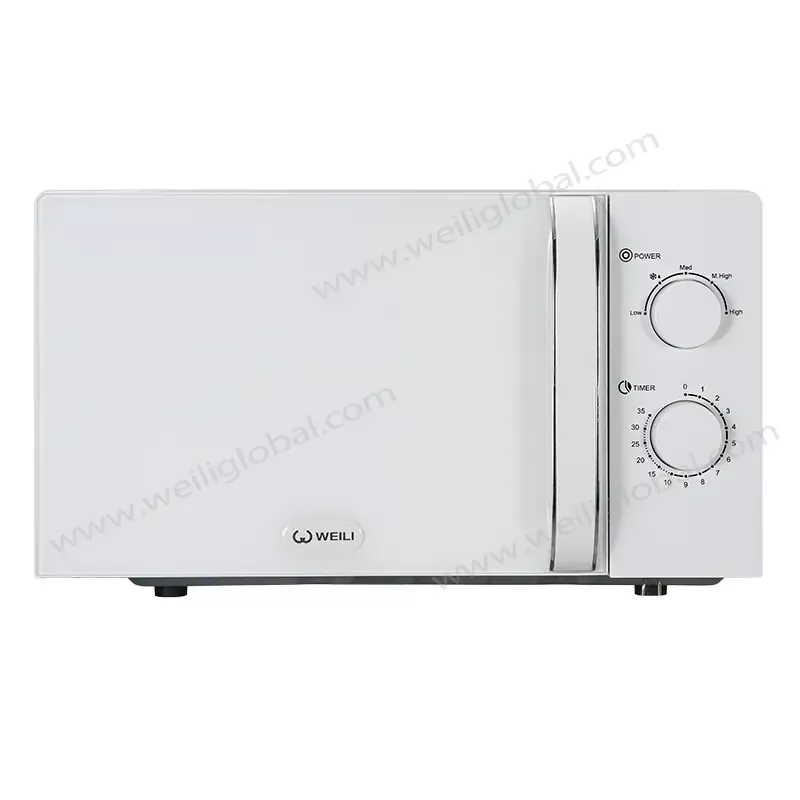Being one of the top manufacturers of cutting-edge appliances for homes and businesses, WEILI Global is frequently questioned about the energy and power usage of our goods, such as the WEILI Global Mechanical Microwave Oven. One of the most common questions we receive is, “How many amps does a microwave draw?” In this article, we’ll delve into the details of microwave power consumption and provide insights on how our WEILI Global Mechanical Microwave Oven can meet your energy needs.
The Basics of Microwave Power Consumption
Microwave ovens, like many household appliances, are designed to operate on a specific electrical current, typically measured in amperes (amps). The amount of amps a microwave draws is determined by its wattage, which is the measure of the power it consumes.
The wattage of a microwave is typically listed on the appliance or in the product specifications. For example, our WEILI Global Mechanical Microwave Oven has an input power of 1120 watts and an output power of 700 watts. To calculate the amps a microwave draws, you can use the formula: Amps = Watts / Volts.
Most residential microwaves in North America operate on a 120-volt electrical system, so the formula for our WEILI Global Mechanical Microwave Oven would be:
Amps = 1120 watts / 120 volts = 9.33 amps
It’s important to note that this is the maximum current draw, which occurs when the microwave is operating at its full power. During intermittent or lower-power use, the amps drawn may be lower.
Factors Affecting Microwave Power Consumption
Several factors can influence the power consumption and amp draw of a microwave oven, including:
- Wattage: Higher-wattage microwaves will typically draw more amps than lower-wattage models.
- Cooking mode: Some microwaves have specialized cooking modes, such as convection or grill, which may require more power and thus draw more amps.
- Load size: Heating larger volumes of food or liquid may require more power and result in a higher amp draw.
- Electrical system: The voltage of the electrical system the microwave is connected to can affect the current draw. In North America, the standard is 120 volts, but in other regions, it may be 230 or 240 volts.
Ensuring a Safe and Efficient Microwave Experience with WEILI Global
At WEILI Global, we design our microwave ovens, including the WEILI Global Mechanical Microwave Oven, with both safety and efficiency in mind. Our mechanical microwave is suitable for both household and commercial use, offering easy-to-use rotary knobs that allow users to adjust the power level and cooking time with precision.
When it comes to power consumption, our WEILI Global Mechanical Microwave Oven is engineered to provide the optimal balance of performance and energy efficiency. With its input power of 1120 watts and output power of 700 watts, it draws approximately 9.33 amps on a 120-volt electrical system, making it a reliable and efficient choice for your kitchen or commercial setting.
Conclusion
Understanding the power consumption and amp draw of a microwave oven is an important consideration for ensuring the safe and efficient operation of your appliance. At WEILI Global, we are committed to providing our customers with high-quality, user-friendly microwave ovens that deliver exceptional performance while meeting their energy needs.
Whether you’re upgrading your home kitchen or outfitting a commercial kitchen, our WEILI Global Mechanical Microwave Oven can be a valuable asset, with its easy-to-use controls, versatile cooking capabilities, and energy-efficient design. If you have any further questions about the power requirements or specifications of our microwave ovens, please don’t hesitate to reach out to our customer support team. We’re here to help you make an informed decision and get the most out of your WEILI Global appliances.
